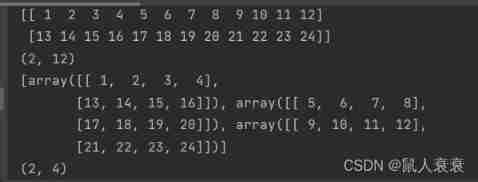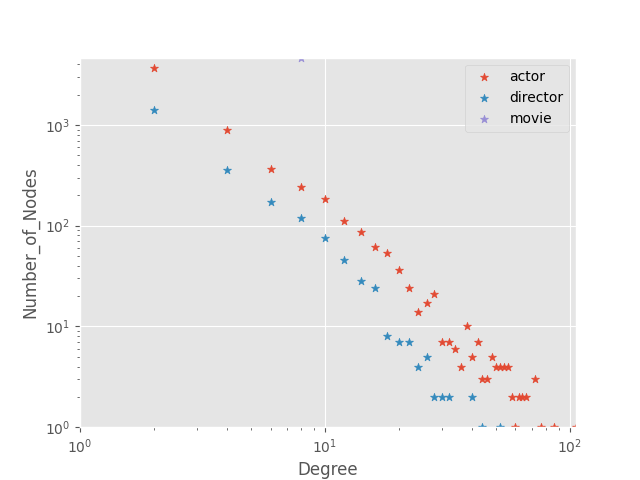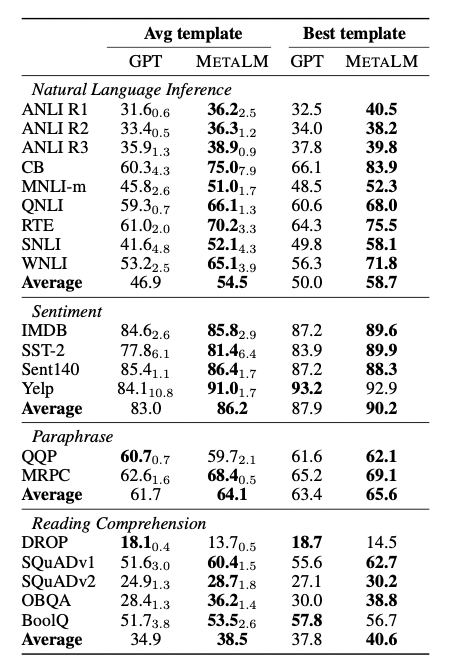当前位置:网站首页>Learning records of numpy Library
Learning records of numpy Library
2022-06-27 13:37:00 【Rat human decline】
Catalog
Horizontal and vertical operation
3、Adding, removing, and sorting elements
5、convert array( such as A one-dimensional To A two-dimensional )
To qualify elements in a sequence
reverse an array Take the opposite
Multidimensional sequence flat
Transposing( Transposition ) and reshaping a matrix
10、Working with mathematical formulas
1、array
what is array
An array is a central data structure of the NumPy library.
An array is a grid of values and it contains information about the raw data, how to locate an element, and how to interpret an element.( Like learning pytorch)
import numpy as np
import torch
a = np.array([[1, 2, 3, 4], [5, 6, 7, 8], [9, 10, 11, 12]])
print(a)
print(a.dtype)
print(a.shape)
''''
In NumPy, dimensions are called axes.
[[ 1 2 3 4]
[ 5 6 7 8]
[ 9 10 11 12]]
This matrix can be said to be ,3 Row four column
It can also be said that
The first axis has a length of 3 and the second axis has a length of 4.
'''
print(a[0])narray
N-dimensional array
The NumPy ndarray class is used to represent both matrices( matrix ) and vectors( vector ).
vector: an array with a single dimension
matrix: an array with two dimensions
tensor( tensor ): 3-D or higher dimensional array
2、create a basic array
import numpy as np
import torch
a = np.zeros(2)
print(a)
a = np.ones(2)
print(a)
a = np.arange(4) #an array with a range of elements
print(a)
b = np.arange(1,8,3) #start end step
print(b)
a = np.linspace(0, 10, num=5) # branch 5 branch Linear increase
print(a)
a = np.ones(2, dtype=np.int64) #specify the type
print(a)Horizontal and vertical operation
Horizontal and vertical merge
import numpy as np
a1 = np.array([[1, 1],
[2, 2]])
a2= np.array([[3, 3],
[4, 4]])
a_h = np.hstack((a1,a2)) # level
print(a_h)
a_v = np.vstack((a1,a2)) #vertical vertical
print(a_v)Split horizontally and vertically

import numpy as np
a = np.arange(1,25).reshape(2,12)
print(a)
print(a.shape)
'''
Return a list
return 3 individual array
Every array Of shape (2*4) 4 = 12/3, The original 12 Column
'''
a_hsp = np.hsplit(a, 3)
print(a_hsp)
print(a_hsp[0].shape)
3、Adding, removing, and sorting elements
Sort
import numpy as np
import torch
arr = np.array([2, 1, 5, 3, 7, 4, 6, 8])
print(arr)
arr_sort = np.sort(arr)
print(arr_sort)
print(arr)

It can be seen that , Sorting does not change the elements of the original sequence

such as
import numpy as np
import torch
'''
Returns the index of the elements of an ordered sequence
'''
x = np.array([3, 1, 2])
index = np.argsort(x)
print(index) #3-0,1-1,2-2, The index returned 1,2,0concatenate Connect
import numpy as np
import torch
a = np.array([1, 2, 3, 4])
b = np.array([5, 6, 7, 8])
c = np.concatenate((a, b))
print(c)
x = np.array([[1, 2], [3, 4]])
print(x) # 2*2
y = np.array([[5, 6]])
z = np.concatenate((x, y), axis=0) # Same number of columns Connect
print(z)
x = np.array([[1, 2, 3]])
print(x) # 2*2
y = np.array([[5, 6]])
z = np.concatenate((x, y), axis=1) # The same number of lines Connect
print(z)4、shape of array
get the shape of array
'''
The three-dimensional array 3x2x4
'''
array_example = np.array([[[0, 1, 2, 3],
[4, 5, 6, 7]],
[[0, 1, 2, 3],
[4, 5, 6, 7]],
[[0 ,1 ,2, 3],
[4, 5, 6, 7]]])
print(array_example)
print(array_example.ndim) # Print dimension
print(array_example.shape)
print(array_example.size) # Total number of print elements reshape
import numpy as np
'''
The three-dimensional array 3x2x4
'''
array_example = np.array([[[0, 1, 2, 3],
[4, 5, 6, 7]],
[[0, 1, 2, 3],
[4, 5, 6, 7]],
[[0 ,1 ,2, 3],
[4, 5, 6, 7]]])
print(array_example)
array_example1 = np.reshape(array_example,newshape=(3,4,2),order='C')
print(array_example1.shape)
print(array_example1)
5、convert array( such as A one-dimensional To A two-dimensional )
import numpy as np
a = np.array([1,2,3,4,5,6])
print(a)
print(a.shape)
a2 = a[np.newaxis, :] #np.newaxis will increase the dimensions of your array
print(a2)
print(a2.shape)
a3 = np.expand_dims(a, axis=1) # expand dim Expand dimensions
print(a3)
print(a3.shape)
6、index of array
index

import numpy as np
data = np.array([1, 2, 3])
print(data[1])
print(data[1:])
print(data[-2:])To qualify elements in a sequence

import numpy as np
a = np.array([[1 , 2, 3, 4], [5, 6, 7, 8], [9, 10, 11, 12]])
# Establish a conditional discriminant
five_blow = (a <= 5)
print(a[five_blow])
divisible_by_2 = (a % 2 == 0)
print(a[divisible_by_2])
c = a[(a > 2) & (a < 11)]
print(c)return boolean values

import numpy as np
a = np.array([[1 , 2, 3, 4], [5, 6, 7, 8], [9, 10, 11, 12]])
five_up = (a > 5) | (a == 5)
print(five_up)7、Basic array operations
Basic operation
addition, subtraction, multiplication, division, and more
import numpy as np
a = np.array([1,2])
b = np.ones(2,dtype=int)
print(a)
print(b)
c = a + b
print(c)
c1 = a - b
print(c1)
c2 = a * b
print(c2)
c3 = a // a
print(c3)Sum up Find the maximum value
import numpy as np
a = np.array([1,2])
print(a.max())
print(a.min())
print(a.sum())reverse an array Take the opposite
A one-dimensional
import numpy as np
arr = np.array([1, 2, 3, 4, 5, 6, 7, 8])
reversed_arr = np.flip(arr)
print(reversed_arr)Multidimensional

import numpy as np
arr_2d = np.array([[1, 2, 3, 4], [5, 6, 7, 8], [9, 10, 11, 12]])
arr_2d_re = np.flip(arr_2d,axis=0) # Press That's ok Take the opposite
print(arr_2d_re)
arr_2d_re1 = np.flip(arr_2d,axis=1) # Press That's ok Take the opposite
print(arr_2d_re1)
arr_2d_re2 = np.flip(arr_2d)
print(arr_2d_re2) 


Specifies that the row and column are negated
import numpy as np
arr_2d = np.array([[1, 2, 3, 4], [5, 6, 7, 8], [9, 10, 11, 12]])
arr_2d[1] = np.flip(arr_2d[1]) # The second line Take the opposite
print(arr_2d)
arr_2d = np.array([[1, 2, 3, 4], [5, 6, 7, 8], [9, 10, 11, 12]])
arr_2d[:,1] = np.flip(arr_2d[:,1]) # Second column Take the opposite
print(arr_2d) 

Multidimensional sequence flat
Reshaping and flattening multidimensional arrays
import numpy as np
arr_2d = np.array([[1, 2, 3, 4], [5, 6, 7, 8], [9, 10, 11, 12]])
a_flat = arr_2d.flatten()
print(a_flat)![]()
import numpy as np
arr_2d = np.array([[1, 2, 3, 4], [5, 6, 7, 8], [9, 10, 11, 12]])
a_flat = arr_2d.flatten()
print(a_flat)
'''
To the original array No impact
'''
a_flat[0] = 99
print(arr_2d)
print(a_flat)
'''
use ravel, the changes you make to the new array
will affect the parent array.
Flattened And with the original array There is a direct impact
'''
a_flat2 = arr_2d.ravel()
print(a_flat2)
a_flat2[0] = 99
print(a_flat2)
print(arr_2d)8、matrices matrix
Create a matrix


import numpy as np
matrix = np.array([[1, 2], [3, 4], [5, 6]])
print(matrix)
print(matrix[0,1])
print(matrix[1:2])
print(matrix[1:2,1]) 
import numpy as np
matrix = np.array([[1, 2], [3, 4], [5, 6]])
print(matrix)
print(matrix.max())
print(matrix.min())
print(matrix.sum())
print(matrix.max(axis=0)) # Maximum value per column
print(matrix.max(axis=1)) # The maximum value of each line 
Matrix addition
import numpy as np
data = np.array([[1, 2], [3, 4]])
ones = np.array([[1, 1], [1, 1]])
sumArray = data + ones
print(sumArray)

broadcast - expand
use its broadcast rules for the operation.

It will be automatically replenished
import numpy as np
data = np.array([[1, 2], [3, 4], [5, 6]])
ones_row = np.array([[1, 1]])
sumArray = data + ones_row
print(sumArray) 
Random number matrix
import numpy as np
rng = np.random.default_rng(0)
n = rng.random((2,3))
print(n)Create a larger than 1, Less than 5 Of 2*4 Matrix
import numpy as np
rng = np.random.default_rng(1)
n = rng.integers(5,size=(2,4))
print(n)
Transposing( Transposition ) and reshaping a matrix
import numpy as np
arr = np.array([[1,2,3],[4,5,6]])
print(arr)
arr1 = arr.reshape(3,2)
print(arr1)
# The transpose of the matrix , The two methods
arr2 = arr.transpose()
print(arr2)
arr3 = arr.T
print(arr3)9、unique items and count
A one-dimensional
Return non repeating elements And its index
import numpy as np
a = np.array([11, 11, 12, 13, 14, 15, 16, 17, 12, 13, 11, 14, 18, 19, 20])
unique_values, indices_list = np.unique(a, return_index=True)
print(unique_values)
print(indices_list)
Return non repeating elements And its Number of element repetitions
import numpy as np
a = np.array([11, 11, 12, 13, 14, 15, 16, 17, 12, 13, 11, 14, 18, 19, 20])
unique_values, occurrence_count = np.unique(a, return_counts=True)
print(unique_values)
print(occurrence_count) 
Multidimensional
import numpy as np
a_2d = np.array([[1, 2, 3, 4], [5, 6, 7, 8], [9, 10, 11, 12], [1, 2, 3, 4]])
print(a_2d.shape)
unique_rows, indices, occurrence_count \
= np.unique( a_2d, axis=0, return_counts=True, return_index=True)
print(unique_rows) # Returns a unique row vector
print(indices) # That's ok Corresponding coordinate
print(occurrence_count) # That's ok The emergence of frequency 
10、Working with mathematical formulas




11、 and pandas and Matplotlib


边栏推荐
- MySQL locking mechanism and four isolation levels
- A pang's operation record
- 类模板中可变参的逐步展开
- Journal quotidien des questions (6)
- 同花顺能开户炒股吗?安全吗?
- How to use 200 lines of code to implement Scala's Object Converter
- Embedded development: embedded foundation callback function
- IJCAI 2022 | greatly improve the effect of zero sample learning method with one line of code. Nanjing Institute of Technology & Oxford proposed the plug and play classifier module
- Does Xinhua San still have to rely on ICT to realize its 100 billion enterprise dream?
- Realization of hospital medical record management system based on JSP
猜你喜欢

ZABBIX supports nail alarm
![[tcaplusdb knowledge base] Introduction to tcaplusdb tcapulogmgr tool (I)](/img/ce/b58e436e739a96b3ba6d2d33cf8675.png)
[tcaplusdb knowledge base] Introduction to tcaplusdb tcapulogmgr tool (I)

Summary of redis master-slave replication principle

Openhgnn releases version 0.3

PLM还能怎么用?
![[weekly replay] the 81st biweekly match of leetcode](/img/66/03ee4dbb88b0be7486b71cd4059f44.png)
[weekly replay] the 81st biweekly match of leetcode

On the complexity of software development and the way to improve its efficiency

OpenHGNN发布0.3版本

Openfeign service interface call

Deep understanding of bit operations
随机推荐
Crane: a new way of dealing with dictionary items and associated data
美国芯片再遭重击,继Intel后又一家芯片企业将被中国芯片超越
基于 xml 配置文件的入门级 SSM 框架整合
Summary of basic usage of command line editor sed
【周赛复盘】LeetCode第81场双周赛
How to split microservices
Hue new account error reporting solution
手把手教你搭一个永久运行的个人服务器!
my.ini文件配置
快讯:华为启动鸿蒙开发者大赛;腾讯会议发布“万室如意”计划
Intranet learning notes (8)
万物互联时代到来,锐捷发布场景化无线零漫游方案
crane:字典项与关联数据处理的新思路
JSON. Stringify usage
基于STM32设计的蓝牙健康管理设备
对半查找(折半查找)
深信服X计划-系统基础总结
快速搭建一个自己的访问国外网站,搭建ss并开启bbr快速上网
Deep understanding of bit operations
AXI總線


